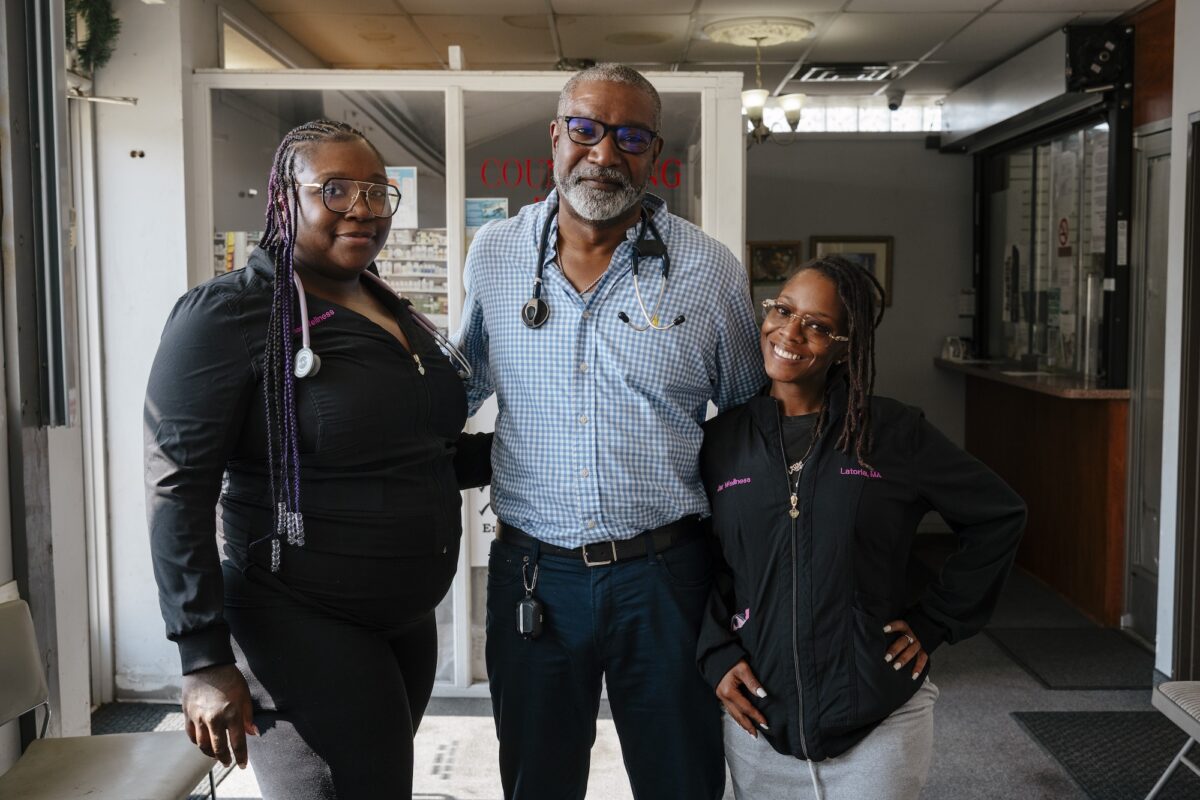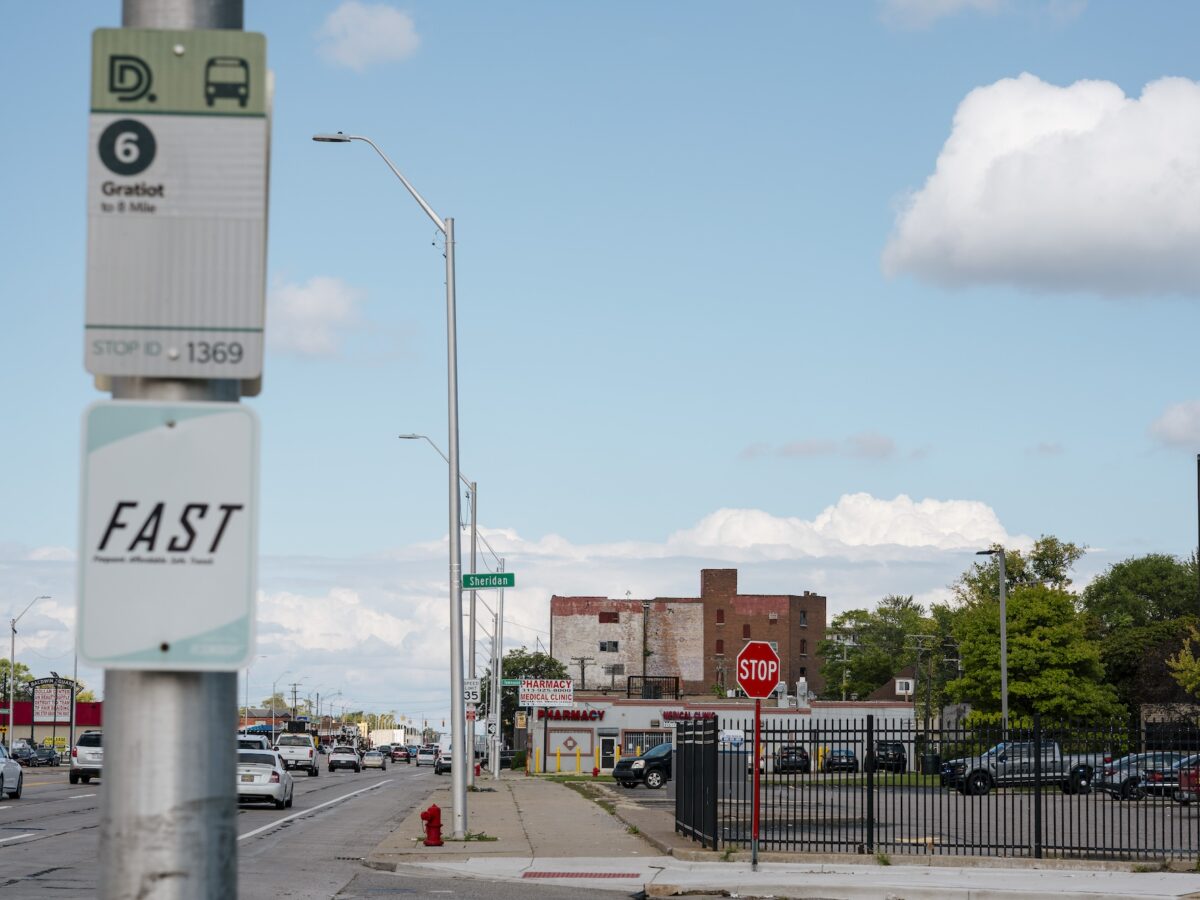Overview:
- Transportation barriers are a critical issue for patients at JAR Primary Care and Wellness in Detroit, leading to missed or rescheduled appointments and potentially increased hospitalizations.
- John Mailey, who runs the clinic, is dedicated to caring for patients with chronic conditions like diabetes, high blood pressure, and heart disease.
- The clinic's staff foster a family-like atmosphere and go above and beyond to assist patients in overcoming these challenges. In the absence of lasting solutions, the staff take it upon themselves to alleviate the burdens faced by their patients.
This story was produced as a project for the USC Annenberg Center for Health Journalism’s National Fellowship, with support from the National Fellowship Fund and the Dennis A. Hunt Fund for Health Journalism.
John Mailey has seen young men wither away from untreated diabetes.
“Their eyes go bad. Their teeth fall out. They can’t feel their feet,” Mailey recalled, because prolonged, high blood sugar levels caused numbness.
Mailey is determined to protect his patients from the harmful effects of chronic disease. He runs JAR Primary Care and Wellness on Detroit’s east side. The clinic offers weight and blood pressure management, along with other basic medical services, and each month, the clinic’s staff expects to care for 130 to 150 patients.
Yet a portion of them don’t make it to the clinic’s doorstep.
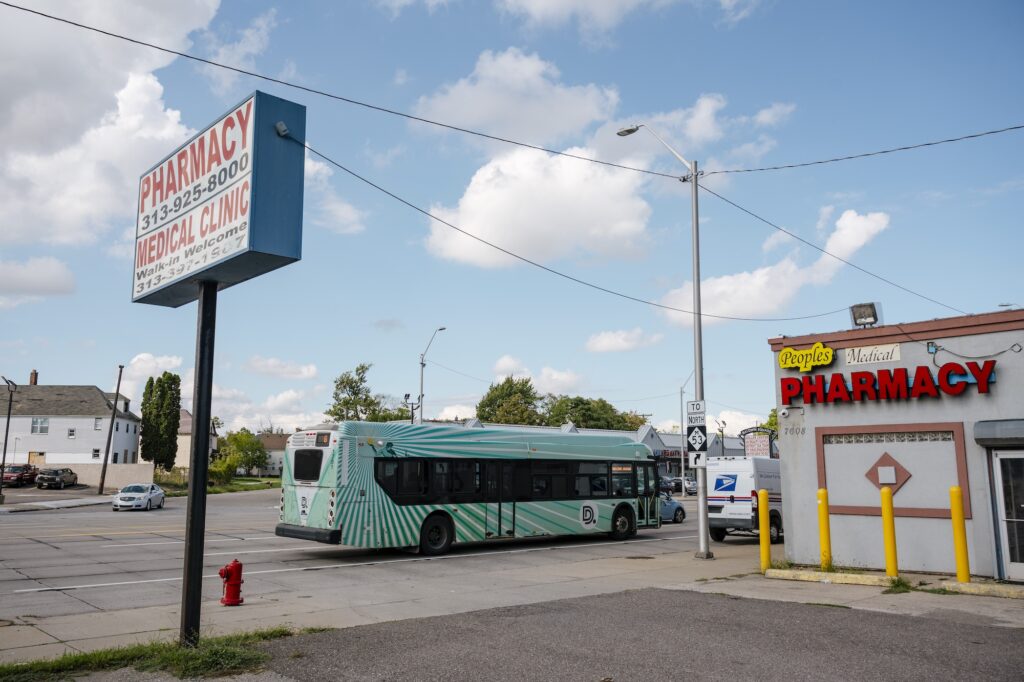
“Between 15% and 20% of patients a month will miss, or they’ll come a few days later because their transportation didn’t make it on time, or the bus didn’t arrive, or their ride couldn’t pick them up,” Mailey said.
“We see a lot of helplessness or hopelessness when that happens.”
Missed medical appointments, which cost the U.S. healthcare system more than $150 billion annually, can lead to increased hospitalizations. It’s a problem across the nation. Without transportation access, about 21% of U.S. adults skipped needed medical care in 2022.
At JAR Primary Care, transportation barriers overwhelm half of all patients. Staff get nimble and creative to help patients reach them—the clinic’s mission is high stakes. Patient survival is Mailey’s responsibility to bear. “I’m a barrier between their mortality,” he said. “It’s that serious.”
‘It’s a stressor’
Mailey comes from a family tree of nurses; his grandmother helped deliver babies, and a cousin works in cardiology. His mother Regina and sister Angella practiced critical care, which focuses on patients with life-threatening illnesses. Mailey, an assistant professor at Michigan State’s College of Nursing, chose this specialty too.
“I like helping people in their most vulnerable states,” he said.
The letters “JAR” in the clinic’s name pay tribute to this lineage: John, Angella and Regina.
Located off Gratiot Ave., the independently-run clinic sits next to a Chase Bank, a Little Caesars and is a two-minute walk from a bus stop. The nondescript building also houses a pharmacy, a setup which aims to provide patients with prescriptions quickly.
“We try our best to make everything fit like the puzzle pieces should,” said Brittany Mailey, a medical assistant responsible for scheduling appointments and patient intake. She’s also John’s niece.
Staff try to cultivate a family-like atmosphere. So far, it’s worked. Patients have offered them food, even unused medical supplies. “Our patients will come and hang out with us,” Brittany Mailey said.
The majority of patients are Detroiters, staff said, although some commute from Oakland and Macomb counties. “Most of our patients come once a month,” Brittany Mailey said. They’re usually older, Black and many seek care for diabetes, high blood pressure or heart disease, serious health problems prevalent across the city.
In 2021, there were 371 cardiovascular deaths per 100,000 Detroit residents, according to the City Health dashboard. The national average was about 210. That same year, about 46% of Detroit adults reported having high blood pressure, a figure higher than in similar Rust Belt cities. Pittsburgh and Chicago were just under 30%.
John Mailey resorts to a “scared straight” approach for diabetic patients he sees veering toward a health calamity.
“I’m going to be very honest with them. I just say, ‘Do you want to live or do you want to die?’” John Mailey said. The tough talk contrasts with his tender demeanor. From there, he’ll steer them back on the road of healthy habits, sharing strategies to control their blood pressure and weight.
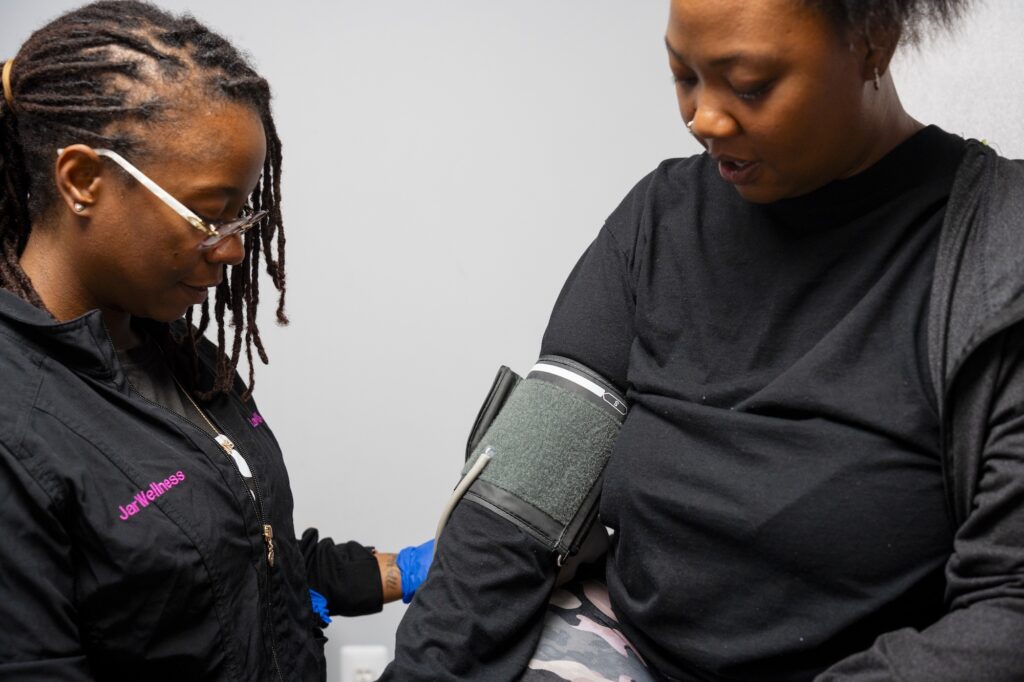
But transportation barriers often burden patients with chronic conditions, a rough reality Brittany Mailey witnesses at the clinic.
“A lot of these patients can’t drive. They’ve got some sort of injury, or they’ve got PTSD from a horrible car accident,” she said. “It’s a big problem when all they’re trying to do is come see a doctor.”
At JAR Primary Care, some patients rely on rides from relatives or friends, and in certain instances, commutes become hectic and unpredictable. Several patients carpool with each other, staff said, and others get dropped off in the morning. The clinic stays open until rides pick patients up, even late into the afternoon.
“We don’t want to leave them up here, or have to lock them outside,” especially in harsh weather, Brittany Mailey said.
John Mailey has noticed that, aware their time is limited, patients get frantic and distracted in the middle of appointments.
“They’re afraid that the transportation is going to leave,” he said. “It’s a stressor for a lot of patients.”
Days without medication
Recently, Britian Jemison was an hour and 20 minutes late to an appointment, but John Mailey still saw him.
“Luckily, he waited for me,” Jemison said.
A gunshot wound had injured Jemison’s spinal cord. He’s paraplegic because of this brush with violence, unable to move parts of his lower body.
The 35-year-old goes to JAR Primary Care for pain management. He’ll also see a foot specialist and a physical therapist elsewhere. The pharmacy next to the clinic doesn’t accept his health insurance, so Jemison visits one in Hazel Park, about 10 miles north of Detroit.
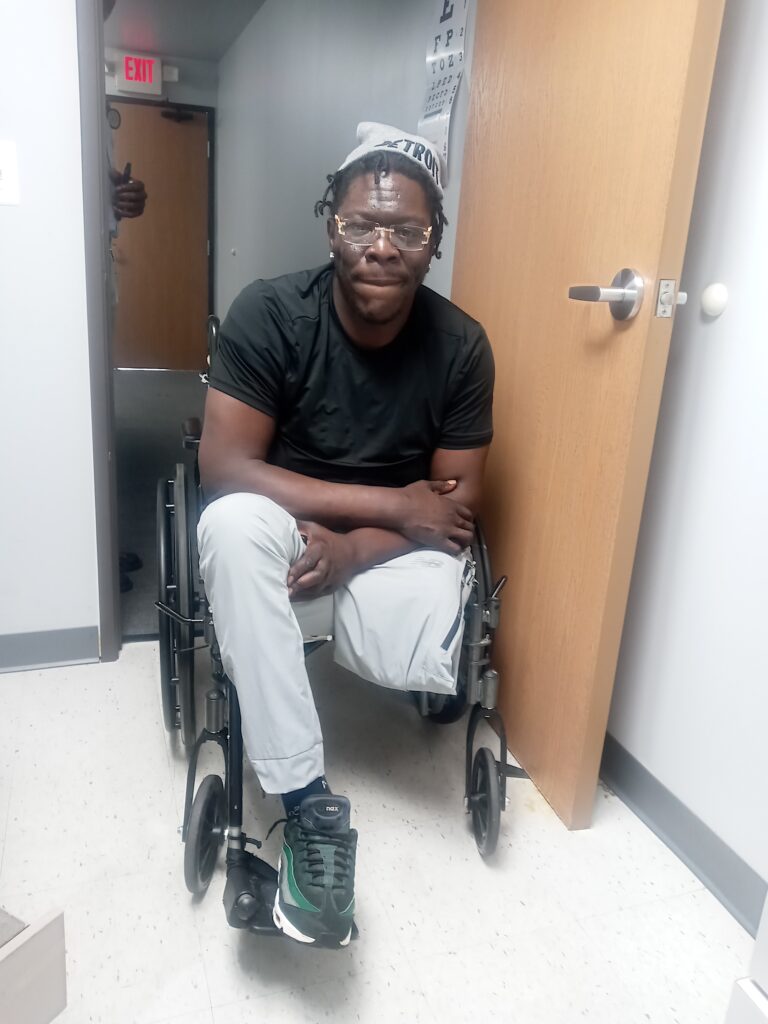
Unable to drive, getting to those places is a constant hassle and a headache.
Jemison typically spends $70 to $160 a month for Lyft rides, using his Social Security payments. “I try to make sure I keep enough money to make it to my doctor’s appointments. But that’s hard,” Jemison said.
Worried for his safety, Jemison only rides a city bus as “a last resort.” He “fell twice” out of his wheelchair, Jemison said, after drivers hit bumps in the road and failed to secure his chair properly. He would rather wheel himself to a destination—as far as three miles—than take a bus.
“I’m willing to do the exercise,” Jemison said. “It just be peace of mind, freedom and a stress reliever.”
He has more reasons to fret. To request a private medical ride covered by his health insurance, Jemison must call at least four days in advance.
“It’s crazy,” he said. “If I was to leave the hospital tomorrow and have to [go to] my doctor the next day, I can’t even call that insurance to get a ride.”
For these trips, which aren’t available for emergencies, he’ll get picked up by a van. Drivers were often unprepared to help him, Jemison said, despite knowing his need for disability accommodations.
The van “doesn’t have any wheelchair lift, or the driver doesn’t even have the proper strength to get me down the stairs and into the van and put the wheelchair in the trunk,” he said.
Jemison can’t go to the pharmacy until he sees a doctor first. He remembers missing an appointment and rescheduling weeks later, when the doctor was free again. If just a few days pass without taking his medication, he’ll start to feel “a tingling, burning sensation,” ripple across his body. His anxiety flares up, too.
Bridging the gap for patients with chronic disease
Brittany and LaToria Hinton, the clinic’s office manager, have surveyed the ecosystem of resources that could help remedy patients’ transportation struggles. Their search ended in disappointment.
“There’re not enough programs,” Brittany Mailey said.
Like Jemison, some patients order vans to travel to medical care. But Brittany Mailey and Hinton agree that it’s not enough. Hinton has seen one health plan offer patients “six rides” a year. “They have to pay for the other ones,” Hinton said.
Without durable solutions, the staff feel obligated to relieve the burdens patients face themselves.
JAR Primary Care has expanded telehealth and partnered with a home care company. Nurses from the company visit patients at home and conduct blood pressure check-ups or take vital signs.
For John Mailey, the extra effort to support patients is worth it. “If they are that strong to get up and care about their health, I’m going to try to meet them halfway and see what I can do to make it better,” he said.
In dire situations, Brittany Mailey and Hinton have paid for patients’ Lyft rides out of their own pockets. “Or we’ll give them a ride home,” Brittany Mailey said.
More in our ‘Stuck and sick in the Motor City’ series
GUIDE: Resources to help Detroit residents travel to medical care
In Detroit, lack of transportation leaves patients vulnerable, but new initiatives aim to bridge the gap. St. Patrick Senior Center, Rides to Care, and DDOT Now offer crucial rides to medical appointments, while MyRide2, The Senior Alliance, and United Way’s Ride United provide essential support for the elderly and disabled.
Broken cars and fragmented public transit detour Detroit patients’ care plans
Without access to a car, transportation alternatives can be unaffordable or inconvenient.
In a city with a high rate of preterm births, a Detroit program gives moms and caregivers free rides to vital care
Without access to a car, transportation alternatives can be unaffordable or inconvenient.

